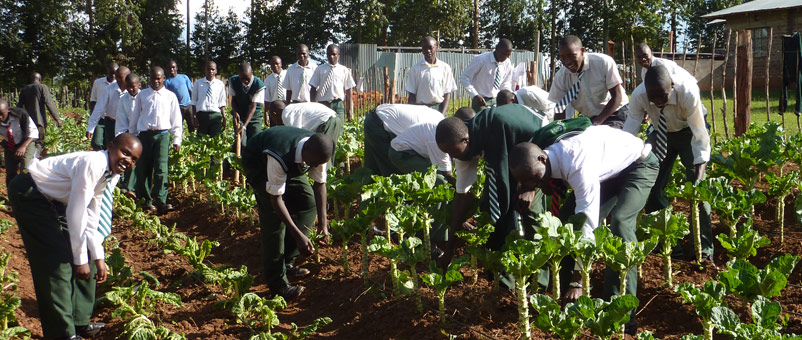Ed Keturakis, Vice President of Program Development at Cultivating New Frontiers in Agriculture (CNFA) and a New Mexico farmer, discusses the importance of conservation agriculture techniques in building soil health and sequestering carbon.
During the annual Borlaug Dialogue held at the World Food Prize Summit in Des Moines, this October, U.S. agribusiness industry leaders and university scientists alike agreed that a carbon-neutral agricultural sector is a laudable and achievable goal. There are two primary ways to reduce atmospheric carbon and achieve carbon-neutrality in order to reach this goal. The first is by reducing emissions from production (e.g. the burning of fossil fuels, livestock-related methane etc) and the other is pulling carbon from the atmosphere and storing it in a carbon sink, such as in forests or soils.
Today, the soil on many U.S. farms contain around 1-2 per cent organic matter, while healthy soil can contain as much as 5-6 per cent. Studies indicate that the adoption of improved agricultural practices, like those employed in conservation agriculture, could allow these soils to sequester an additional 100 million metric tons of carbon per year for the next 15 years, after which the capacity would begin to taper off. According to 2017 figures, this annual carbon reduction is 17 per cent of the greenhouse gas emissions in the agriculture sector, which as a sector, is the second-biggest producer of carbon emissions.
Removing carbon dioxide from the atmosphere, however, is only one of the benefits of conservation agriculture. Another equally important benefit is soil health.
There are three principles of conservation agriculture: minimum soil disturbance, year-round ground cover, and crop rotation. No-till, defined by minimum soil disturbance, is relatively widely practised in U.S. agriculture. According to the most recent USDA statistics, 70 per cent of soybean, 65 per cent of corn, and 67 per cent of wheat acreage was under no-till in the U.S.
But, as a tool for carbon sequestration and building soil health, conservation agriculture as commonly practised in the U.S. can still evolve further. For example, the use of cover crops, which of the three principles has the greatest potential to increase soil carbon, is only practised on about 12 per cent of American farms. Furthermore, the use of herbicides for weed control and cover crop termination needs to be managed to avoid resistance and unintended effects on the soil micro-biome.
The latter issue is worthy of attention for many reasons. The synergistic relationship between a plant’s roots, mycorrhizal fungi, and growth-promoting soil bacteria is at the heart of soil health. These elements work together to expand the root zone of plants, increase the efficiency of nutrient uptake, and provide our crops resistance to certain pathogens. These living soil components thrive when soil organic matter (carbon) is high. Natural practices that ‘cultivate’ the soil biome are, however, relatively ignored in our modern agricultural system, despite evidence that a healthy soil microbiome can provide nutrients for healthy plant growth and resistance to disease – making farming more profitable and resilient.
Finally, the economics of conservation agriculture need to be addressed for the bulk of the world’s farmers who live in Africa, Asia and Latin America. The cost of tractors, no-till seed drills, and inputs, can represent a financial and technological entry barrier for many of these farmers.
My own international development organisation, Cultivating New Frontiers in Agriculture, is integrating conservation agriculture into many of the food security programs we implement in smallholder farming communities. But, in our race to achieve global food security, we should be careful not to lose sight of lessons that we in the developed world are just now learning as a result of our neglect of soil health.
Scientists like Prof. Rattan Lal and Ray Archuleta have illustrated the importance of soil health to the agriculture of the future. Similarly, organisations like Total Land Care in Malawi have developed a system of conservation agriculture that integrates agriculture techniques into the local context where farmers, mostly women, still use hand-hoes to plough several acres of land.
Embracing these emerging lessons, especially for small farmers around the world, means investing in a system that focuses on soil building and allows for more carbon sequestration, in turn addressing one of the biggest issues of our time, climate change.



